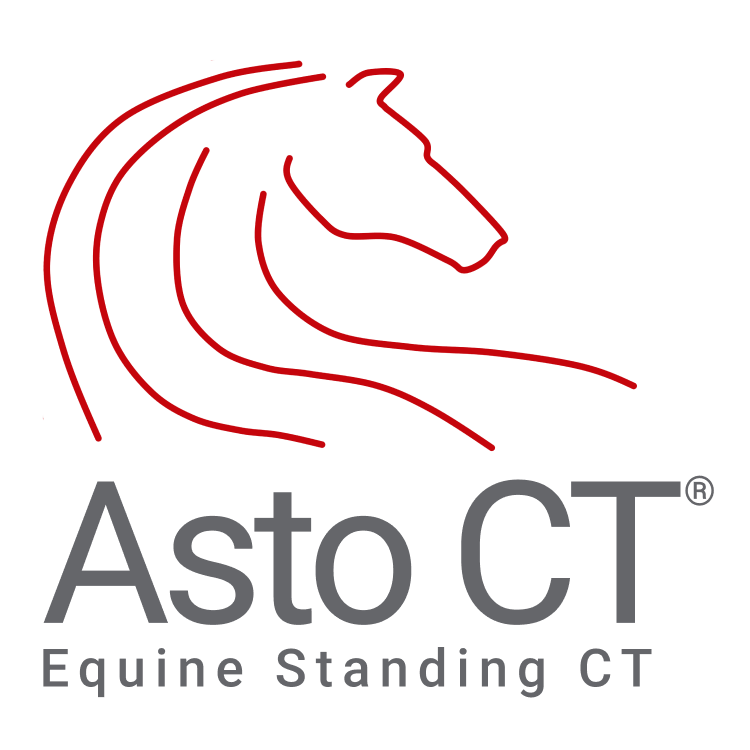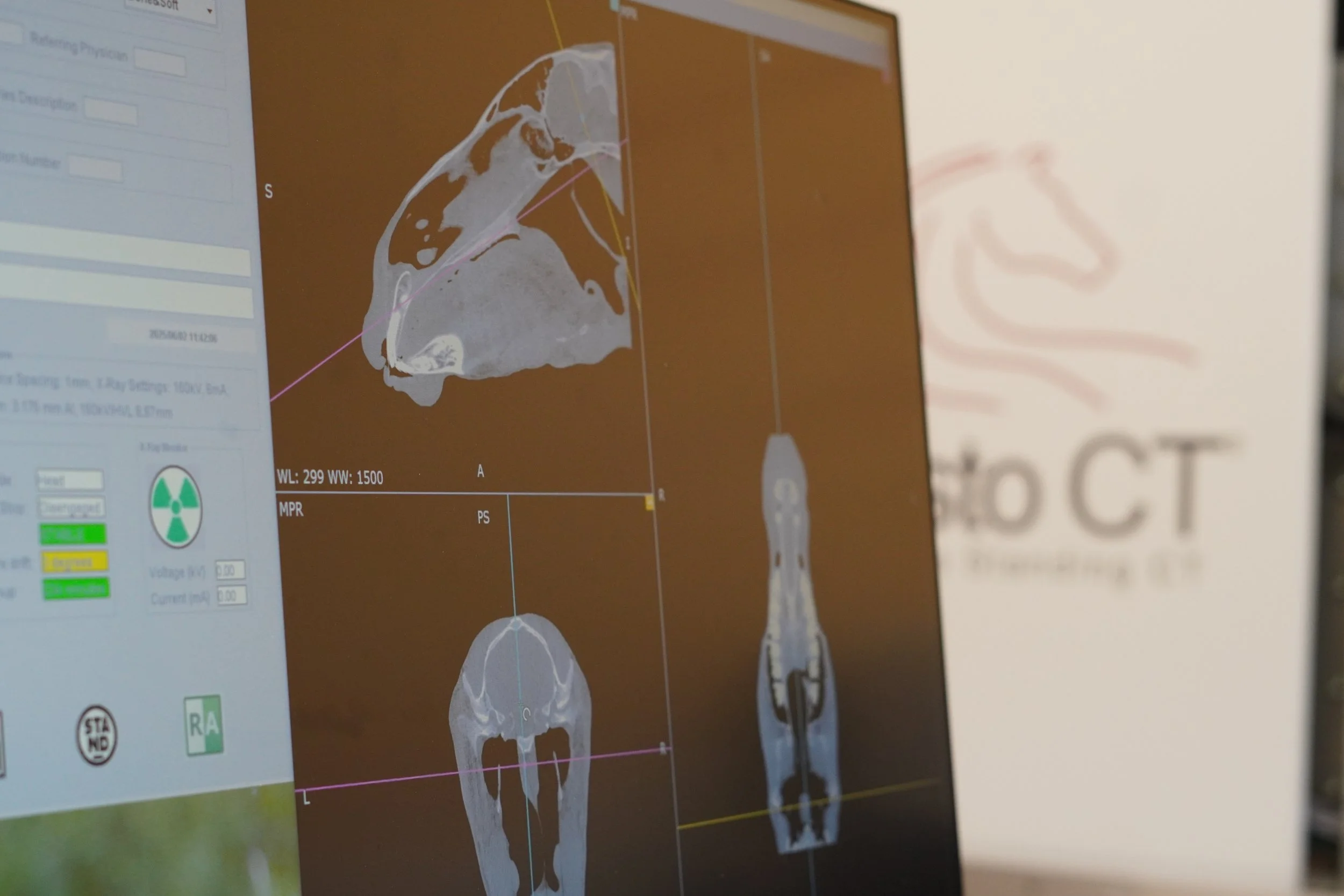What Started as a Wooden Prototype Is Now Transforming Equine Medicine
Introduction
In a landmark achievement for equine veterinary medicine, Asto CT has successfully completed over 10,000+ standing CT scans on horses worldwide. This milestone marks more than a decade of innovation, research, and collaboration between veterinarians, engineers, and industry leaders uniting around a single mission: to make advanced, cross-sectional imaging safer and more accessible for horses.
From Vision to Reality
The concept of standing CT began over a decade ago when Dr. Peter Muir and Dr. Mark D. Markel, both orthopedic researchers and equine clinicians at the University of Wisconsin-Madison, asked a simple but radical question: What if we could perform CT scans on horses while they stood, without anesthesia? Traditional CT required horses to be placed under general anesthesia, posing risks especially for those already suffering from lameness or microfractures.
Mare receiving front limb scan at Virginia Equine Imaging.
Determined to overcome these limitations, the duo reached out to Dr. Thomas “Rock” Mackie, a world-renowned medical physicist and inventor of Tomotherapy. Together, and with the engineering leadership of Dr. David Ergun, Asto CT was founded. Early prototypes included a wooden mockup to test horse tolerance. Despite skepticism from many in the field, horses tolerated scanning, and the concept moved from model to reality.
Transforming Equine Diagnostics
Asto CT’s product, the Equina®, revolutionized how clinicians approach diagnosis and treatment. The standing CT system allows imaging of both limbs simultaneously under natural weight-bearing conditions, something not possible with traditional systems. As Dr. Sabrina Brounts, Clinical Professor and Asto CT Clinical Advisor, explains: “I use CT far more than radiographs now. It’s fast, weight-bearing, and gives me more detail to make informed decisions.”
Skull CT Scan taken with Asto CT.
Dr. Brounts notes the system’s unique ability to generate 3D images from high-resolution scans, allowing veterinarians to detect fractures and lesions with greater accuracy. This precision enhances treatment outcomes across equine disciplines, from racehorses and sport horses to backyard companions.
A Global Impact on Safety
One of the most profound validations of Asto CT's value came in 2020, when the University of Melbourne deployed a scanner to evaluate racehorses before the Melbourne Cup. “Prior to 2020, there were multiple incidents,” says Dr. David Ergun, CEO of Asto CT. “Since the introduction of the Equina scanner, there have been no major injuries in the event. It was one of the first moments I truly saw the machine make a difference.”
This application highlights the broader mission of Asto CT: injury prevention and improved welfare. By identifying pre-existing conditions before they become catastrophic, especially in high-performance horses, standing CT is helping reduce breakdown injuries and enabling more informed decisions.
A Tool for Teaching and Progress
Beyond diagnostics, the standing CT has become a powerful educational tool. Dr. Markel reflects on how veterinary schools across the globe, once skeptical, now see the scanner as essential for teaching students and residents. “It’s changed how we train veterinarians and radiologists,” he says. “We’re seeing things we never could before.”
Radiologist and resident reviewing CT images.
The technology is also evolving. With plans to improve image resolution, reach more anatomy, and even combine CT with other imaging modalities like PET, Asto CT is continuously pushing the boundaries of what's possible in veterinary imaging.
Looking Ahead
While the original motivation centered on improving diagnosis in equine patients, today the Equina system is used across species, including marine mammals, cattle, camelids, and small ruminants, as Dr. Brounts has demonstrated in her clinical work. Its versatility and efficiency are shaping the future of preventive care, surgical planning, and even research.
CT scan of a 11-month-old Holstein bull done standing.
Yet for all its technological achievement, the heart of Asto CT’s story lies in collaboration. As Dr. Ergun notes, “Seeing is believing. Come see the scanner in action. Talk to clinicians using it. That’s when it clicks, how much this technology can change your practice and improve patient care.”
Conclusion
From a shared idea between colleagues to a global tool used in thousands of cases, Asto CT’s 10,000+ scans milestone is more than a number, it’s a testament to vision, perseverance, and the power of challenging the status quo. As Asto CT continues to grow, its impact on equine medicine and beyond is only just beginning.
Want to know more about standing CT and how it can integrate into your practice? Download our planning guide HERE.




